Space
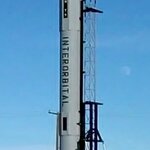
My Project Calliope satellite will be launched on an Interorbital Systems (IOS) rocket-- but IOS hasn't yet launched into orbit. Where are they, how close are we to launch, and what's the risk?
Ad: Support Calliope-- limited edition flight gear available until May 21 at kickstarter!
The people who know are Randa and Rod Milliron, of Interorbital Systems (IOS). The person who asked is David Livingston of The Space Show. And I, your humble writer, will present this summary of the April 24th hour-long podcast.
Note to the world: if you produce a podcast, include a text transcript, please. I do…

A colleague I respect, Peter Ong Lim, has good points about whether the Project Calliope satellite is citizen science or personal science. Darlene Cavalier gave the definition of 'citizen scientist' as "people who aren't trained in science but help real scientists." I would define 'personal science' as what you call citizen science if the citizen isn't plugged into an existing science network/channel like SETI or such.
You could also call it mad science or individual/small group science projects. I would put amateur astronomy into the 'personal science' more than 'citizen…
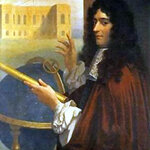
If you Google calculating the date of Easter, you are likely to get any number of top responses from SEO-friendly content farms that go something like "Easter is the first Sunday after the first full Moon following the vernal equinox", which is great for trivia but the how of that is great Easter science.
The day of Easter was set in 325 A.D. but it immediately presented a problem for scientific types; it's darn hard to calculate the date in the future when the Earth is the center of the universe. So planning spring break trips to Cabo was tough. By the 16th century the…

When black holes slam into each other, the warping of space and time must be so complicated that physicists haven't been sure how to understand the details of what goes on, but by combining theory with computer simulations, Kip Thorne, Feynman Professor of Theoretical Physics, Emeritus, at the California Institute of Technology (Caltech) and colleagues say they have developed conceptual tools they've dubbed tendex lines and vortex lines.
They say black-hole collisions can produce vortex lines that form a doughnut-shaped pattern, flying away from the merged black hole like…
Many of us while growing up and listening to our bedtime stories learned to not freak out and run screaming through the streets if we thought that the “sky is falling.” As little chickens, we were taught at an early age that it was best to be brave, calm, and rational, else be considered a crazed lunatic.
Artist's concept of a catastrophic asteroid impact with the early Earth. An impact with a 500-km-diameter asteroid would effectively sterilize the planet. The Earth may have experienced such gigantic impacts in its youth, but fortunately today there are apparently no projectiles this large…
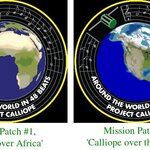
There's a joke "what if schools got fully funded and the military had to run a bake sale to buy their next aircraft carrier?" I'm here to tell you how to run your own Bake Sale for Science!
Except, without the baking part. Curious how to fundraise for science? I set about fundraising and, in the process, will share lessons learned. I'll also cover how much a picosatellite costs.
For the curious space fan, think about what all the big NASA missions have. Just like Project Calliope, they have rockets and hardware and really cool science. But what they have that I lack is... Mission flight…
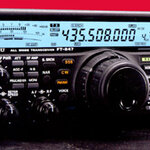
Upon launch, there will be 32 picosatellites, all desperately trying to beam their messages to Earth. FCC frequency coordination and requirements are the next hurdle to solve for Project Calliope.
Calliope is an amateur mission so we play by amateur radio rules. Calliope is armed with a half-watt Radiometrix transmitter. I already have an FCC-issued amateur HAM radio technican-class license, but that is just the first step.
The FCC rules the spectrum, but the International Amateur Radio Union (IARU) are the entity that actually coordinates satellites. I need to file/coordinate with the IARU…
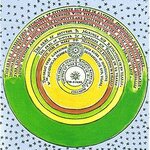
“Auntie”, better known as the BBC, has just treated us to a two-parter, Everything and Nothing, by Jim Al-Khalili. He thoroughly knows his history of science, rather than treating it as an add-on, and delivers the significance of what he says without spoiling it through philosophy and vain deceit” [1].
The blurb says:
Two-part documentary which deals with two of the deepest questions there are – what is everything, and what is nothing?
In two epic, surreal and mind-expanding films, Professor Jim Al-Khalili searches for an answer to these questions as he explores the…
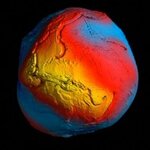
Earth's gravity revealed in unprecedented detail
This latest news release from ESA, the European Space Agency, gives us the most accurate picture yet of the geoid, which
is the surface of an ideal global ocean in the absence of tides and currents, shaped only by gravity. It is a crucial reference for measuring ocean circulation, sea-level change and ice dynamics – all affected by climate change.
It has been measured by The Gravity Field and Steady-State Ocean Circulation Explorer (GOCE), an ESA satellite launched in 2009.
So to read more, and to watch Potato Earth rotating in space, click…
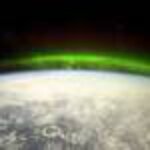
Not all satellite building involves blowing things up, frying circuits, and desperately hacking hardware. Sometimes you get regulatory-related requests such as "provide a brief abstract of your mission (include key milestones or events)". So, free of hype, here is the boilerplate definition I came up with for Project Calliope.
The projectCalliope satellite is a music/science sonification project that will convert the ionosphere to MIDI data for transmission back to earth. Detectors include a magnetic, electric field, thermal, and light detector. Data is gathered…